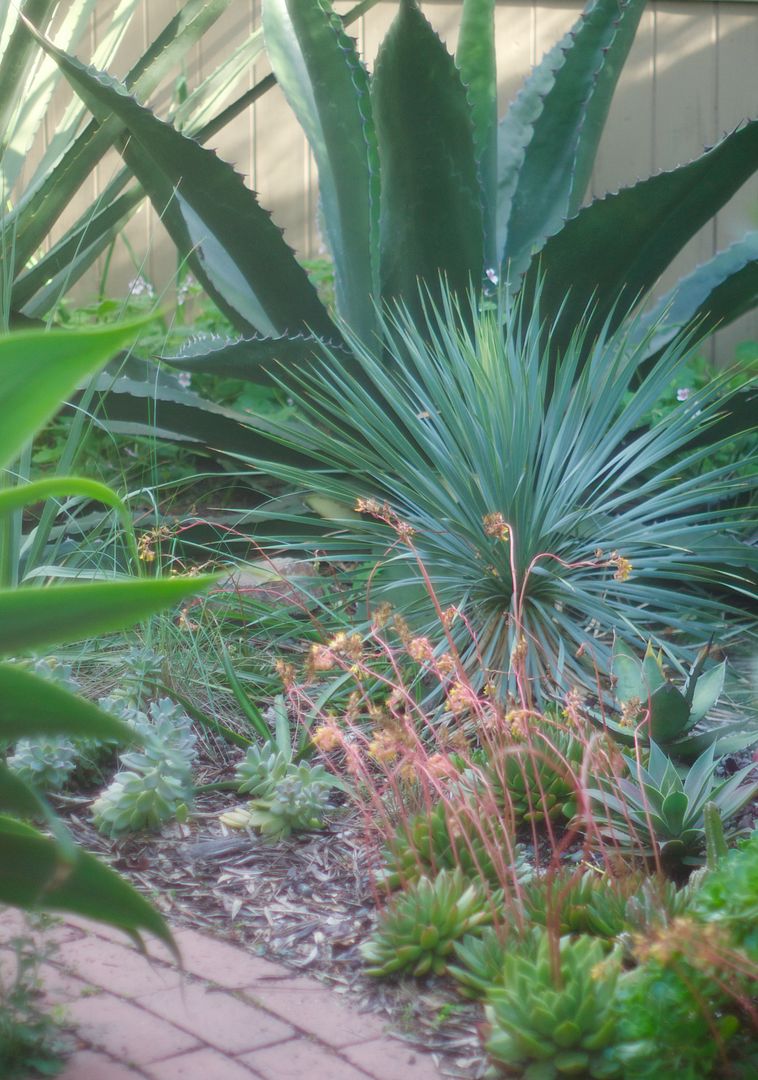
Since I greedily planted the long, narrow front garden smack up against the fence that separates us from legions of parked cars and noisy, fast-moving traffic, it’s difficult to maneuver around for photos (and maintenance). Also, a lot of toothy customers are packed in these close quarters, like the fearsome ‘Jaws,’ and Furcraea macdougalii. I constantly vacillate between privacy and a more streamlined garden that’s visually open to my neighbors. The west end closer to the driveway is unhedged, but this eastern end is like a little green cloister.
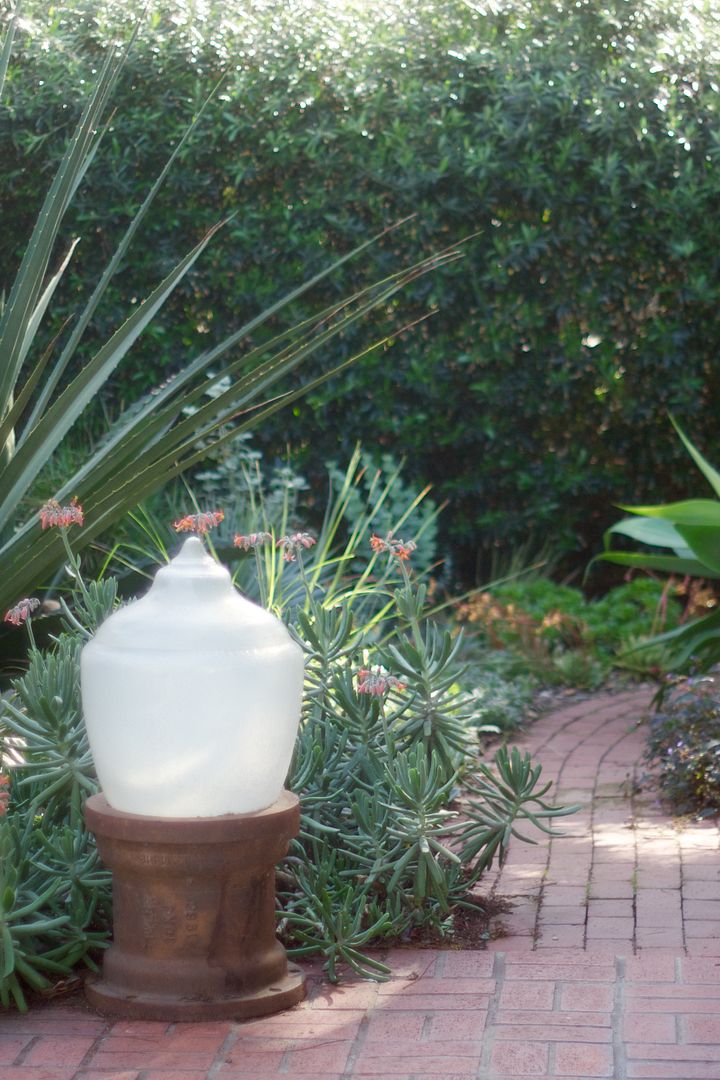
The cotyledon I wrote about earlier in the week is in the front garden, and a young tree aloe ‘Hercules,’ and a manzanita ‘Louis Edmonds,’ and a Nolina nelsonii, various agaves, Graptoveria ‘Fred Ives’ — it’s a mishmash of a garden. The main criteria for a plant’s inclusion is, once established, the ability to go completely summer dry.

And towering 20 feet over it all, fairly close to the house, is the triangle palm, Dypsis decaryi. I’ve noticed that when there isn’t a clear viewpoint or sightline into a space, planting is less about design than a collector’s free-for-all.
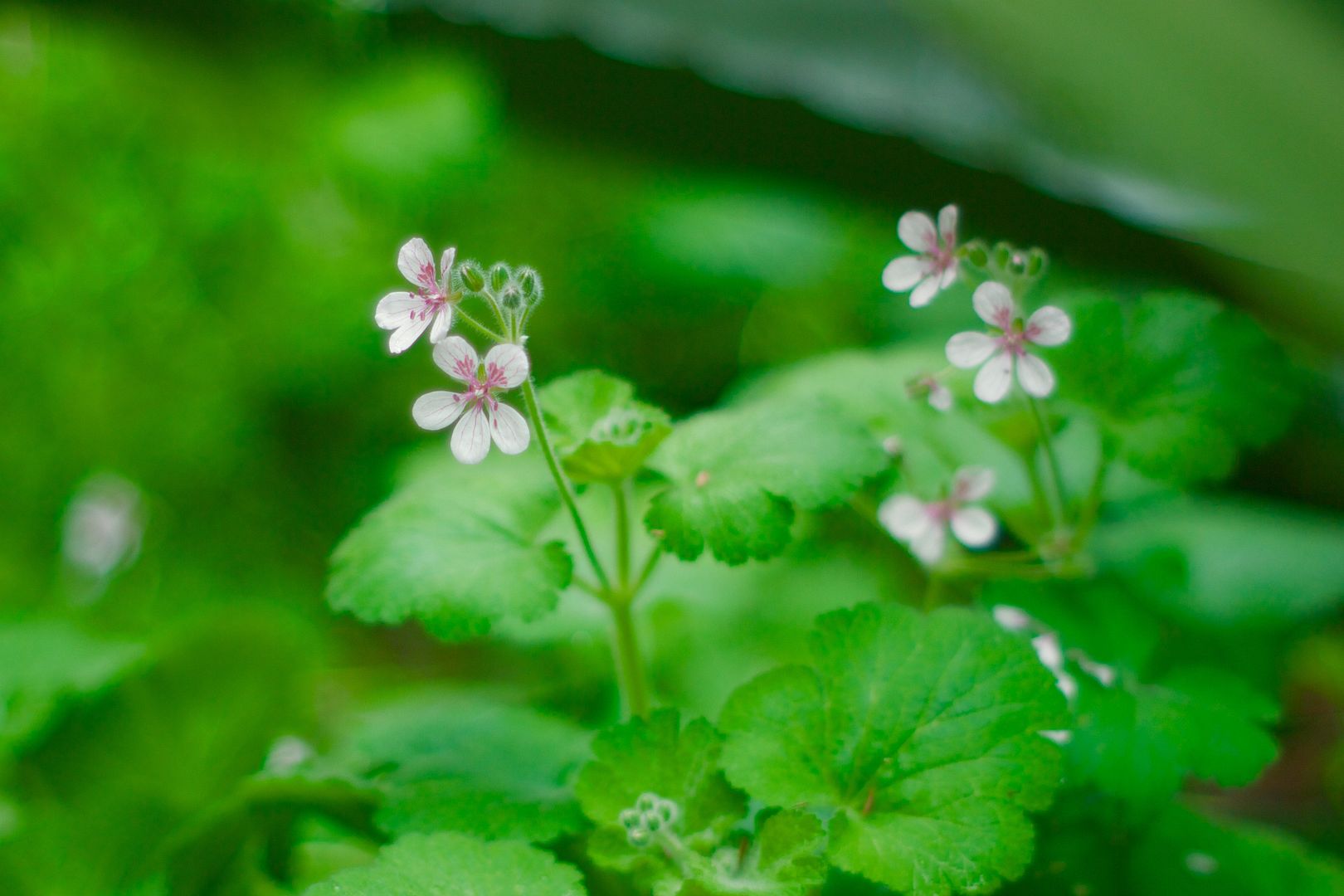
In March reseeding Erodium pelargoniflorum carpets the ground around the succulents — you can see the little white flowers cozying up to ‘Jaws’ in the first photo. This annual erodium completely dies out when the soil dries out in summer.
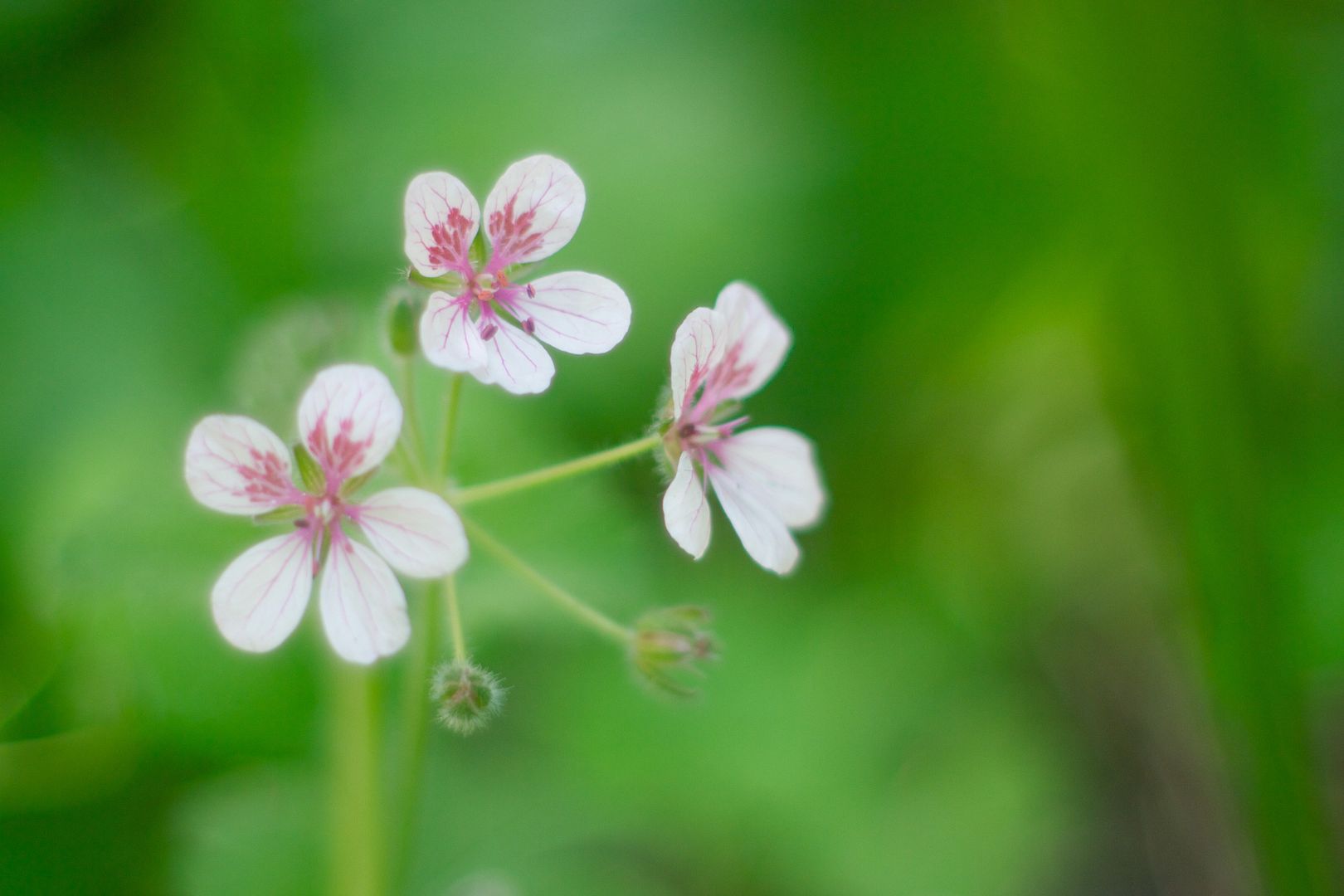
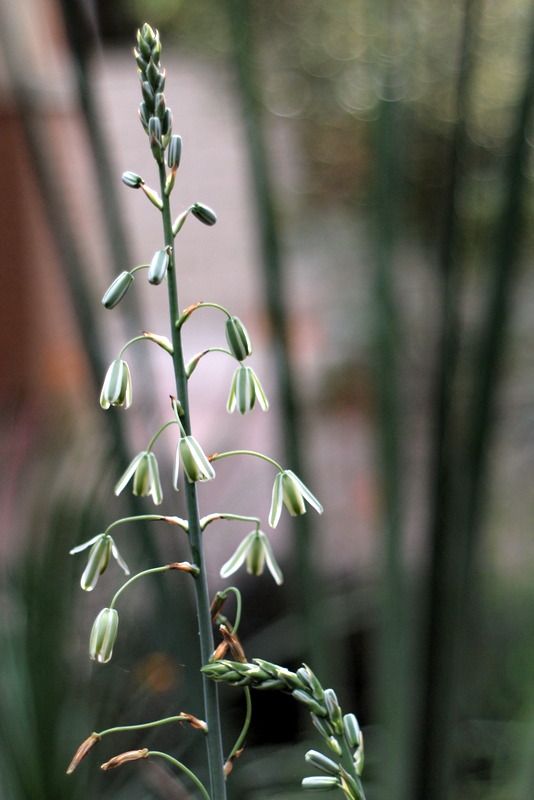
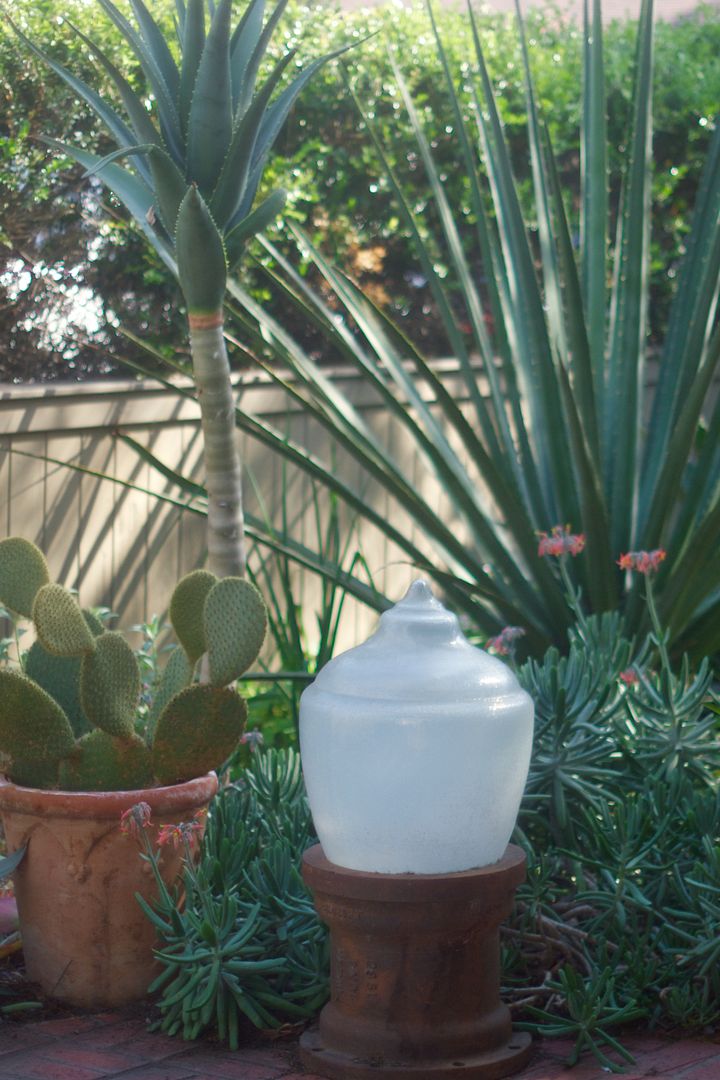
This northern boundary is fence and boxwood. Eastern boundary is a hedge of ‘Little Ollies’ Even though the garden is loaded with spikes, I draw the line at planting opuntias in the ground.
The 3-foot wooden fence is backed on the sidewalk side by a 7-foot high box hedge — a dodge to get around fence height ordinances. I’ve always hated this fence/hedge arrangement, and as of a month ago I desperately wanted it gone — but a month of sheltering in place has changed my mind again. For one thing, so many birds and small mammals love these hedges — to nest in, to duck into when danger threatens. And both the boxwood and olives are fantastic for what turns into a very dry summer garden — the olives being far more attractive than the box, which gets patchy and thin but usually recovers with winter rain. And then there’s that investment in time to grow the hedges and their abilities as sound buffers, carbon sinks, and particulate sponges to consider. And lately I can re-appreciate the psychological distance they provide too. For now, I think the hedges are winning this very old argument.
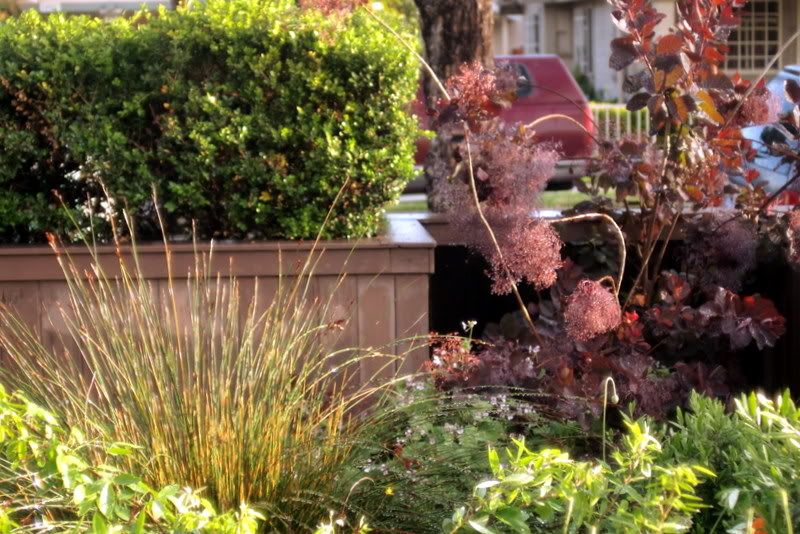
“The drought-tolerant boxwood hedge was a useful means of ‘greening’ up the front of the house to hide the minor revolutionary act of taking out the lawn we inherited with the house many years ago, when such an act drew lots of raised eyebrows.”



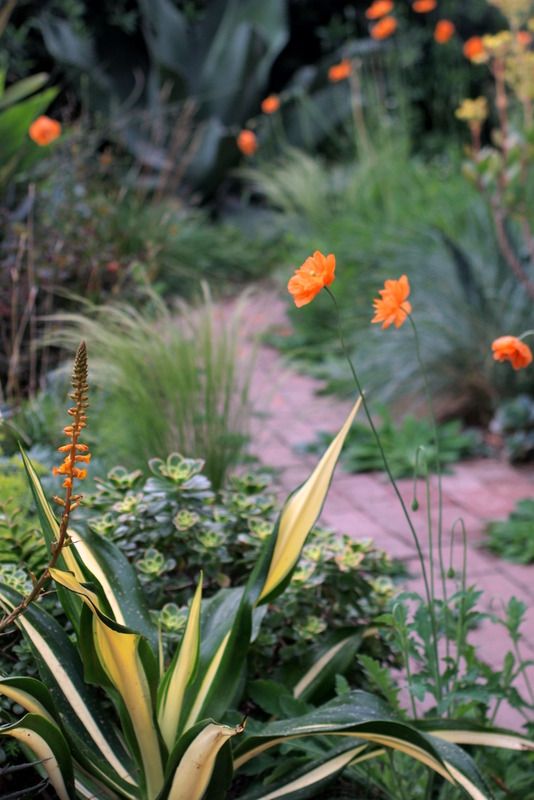
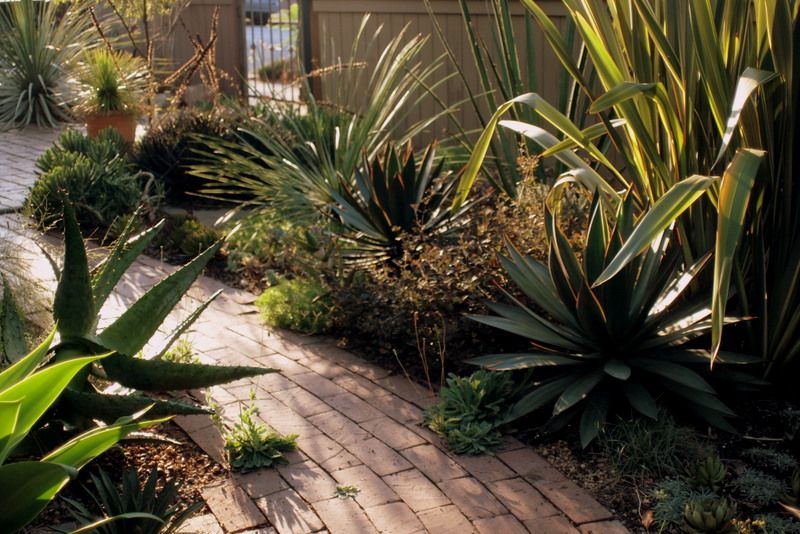
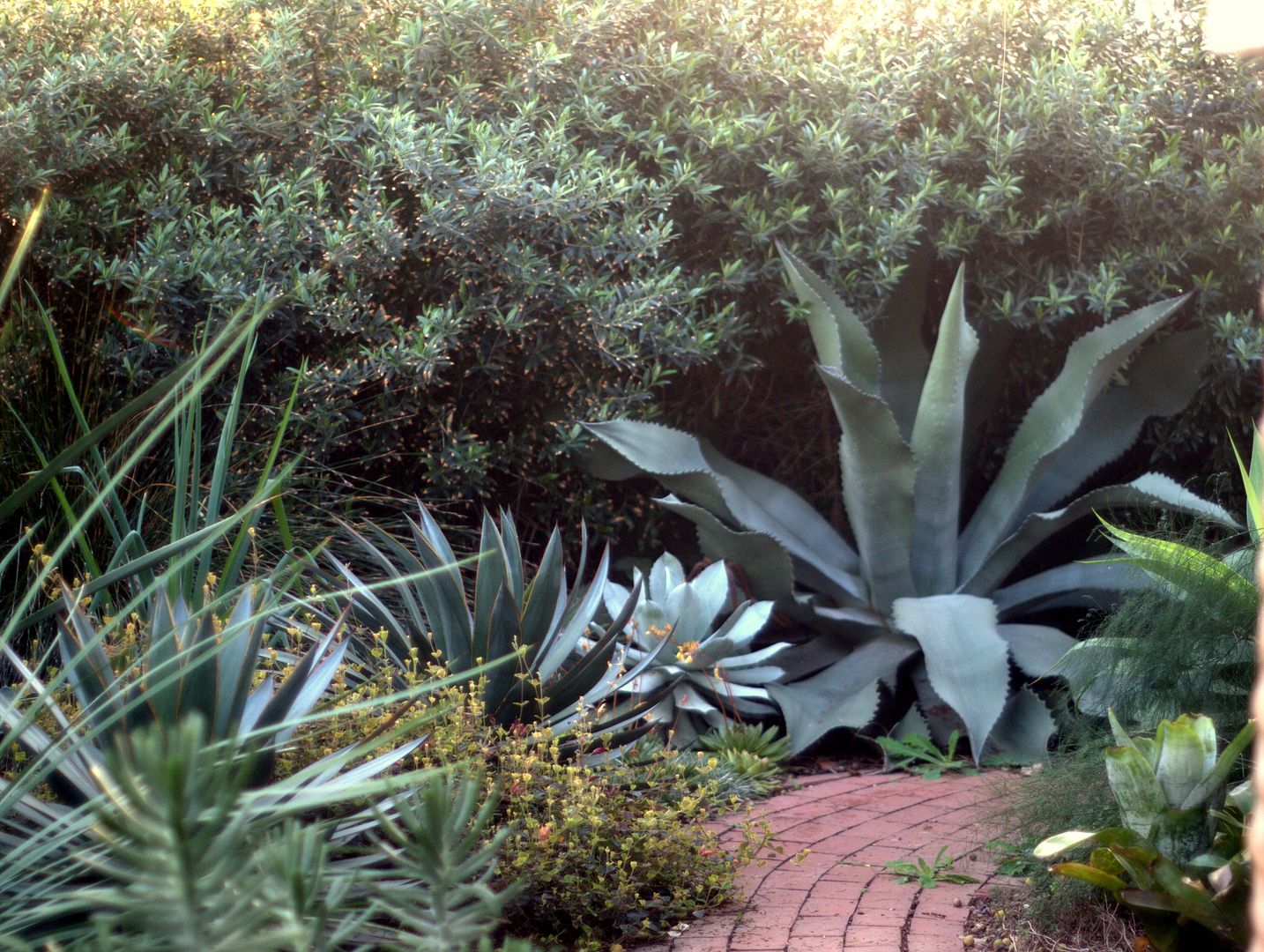
But planting and experimenting with even an awkward bit of ground is enormous fun — a leucospermum and Acanthus spinosus were planted just yesterday.
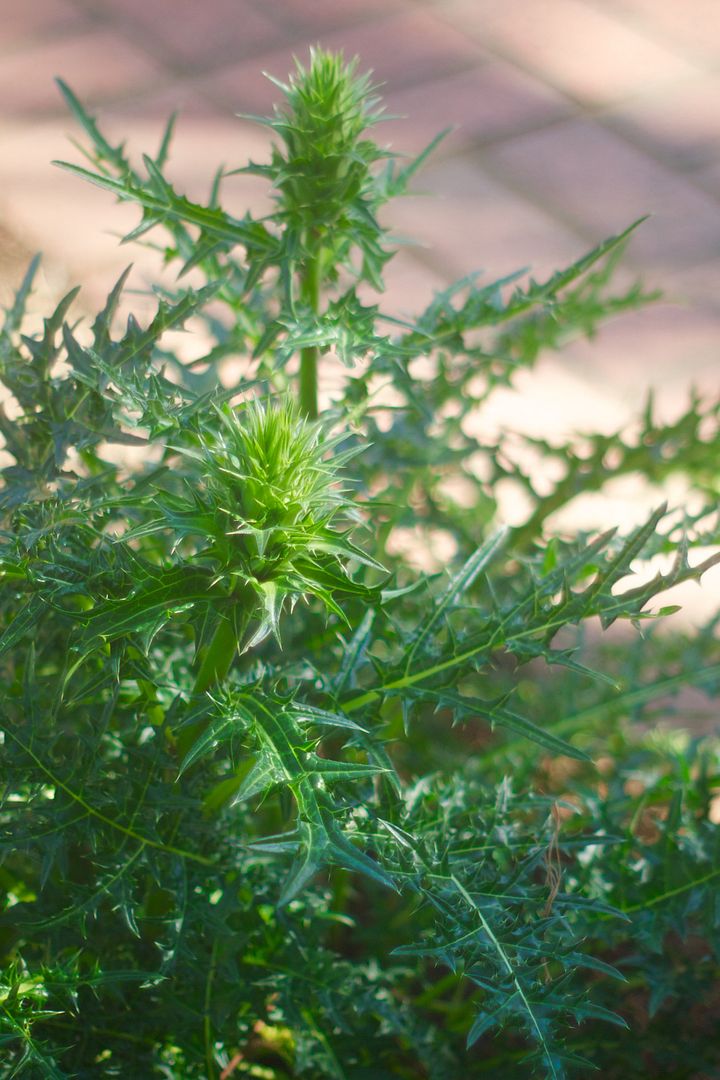
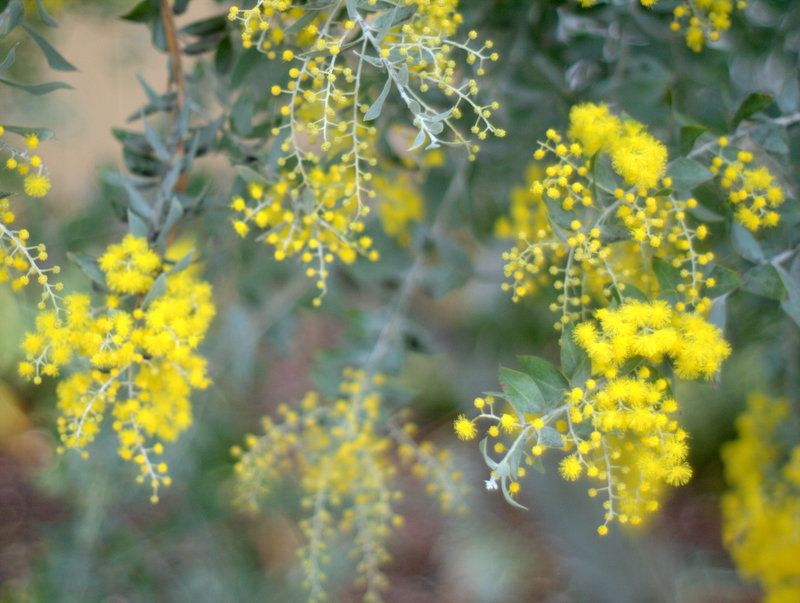
This tree draws a lot of comments and questions as to its identity
For more garden tours, both front and back, although the Theodore Payne Native Plant Garden Tour had to be canceled this weekend, they had the genius idea to share it online — and you can check it out here.

You do have something of a spiky obstacle course but then I’m headed there too. I think of your Mr Ripley every time I pass by mine. It was planted from a small pot some years ago now and is still relatively small, perhaps a foot tall and a bit wider, but I know someday I’m going to have to either perform major surgery or pull it up because it’ll stab anyone that tries to trim the Xylosma hedge.
P.S. My ‘Jaws’ is sneaky about producing pups.
Occupational hazards of growing spikey plants (bandaged fingers). Despite their spikiness they give the garden beds heft and texture. Fun to see how everything has grown and the garden changed.
I’ve always thought of “photographing low” as your trademark, never thinking it might be to avoid something less enticing.
It looks beautiful, and beautifully different, in every iteration.
I like Agave ‘Mr Ripple’! But encroaching…ouch. Though my design coming along is one more of design than a collection, I have 4-5 distinct spaces…and a hedge might happen somewhere…